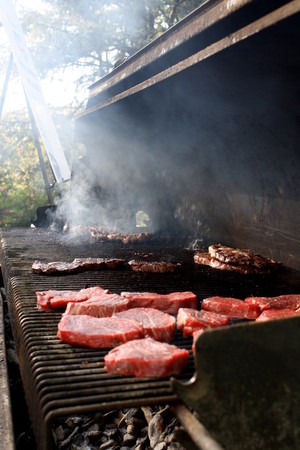26 Oct Fri 2018
Upcycling, Sustainability, and Super-Cows!
Upcycling, Sustainability, and Super-Cows!
Did you know that the Jorgensen Family Foundation and Hedgeapple Farm have worked on issues related to farm system sustainability (both economic and environmental) since well before sustainability was cool? We have always understood that for a farm system to survive in an increasingly competitive and highly regulated food production environment, that system must function with a specific knowledge of the interconnectedness of every component of potential impact both inside and outside the farming system. And, we must always seek to appropriately balance the interaction between the animals we raise and the surrounding ecosystem in which we raise them.
One common accusation leveled against livestock production is that the animals being raised compete with human food needs (or the human food supply) such as grains (corn, wheat etc.). But, that is a simplistic and short-sighted view which fails to take into account the actual nutritional requirements of the human diet and how and where things like grains alone actually fit into that diet. Here is what I mean, using our Hedgeapple Farm system as an example.
Ruminant livestock (animals with 4-chambered stomachs) like beef cattle, sheep, and goats, actually play a key role in a sustainable food system. Simply put, it is because of their unique digestive abilities, primarily the break-down and fermentation of fibrous feed sources that occurs in their largest stomach compartment, the rumen. Beef cattle (and other ruminants) consume and “process” (digest) large amounts of feeds totally unusable by us, and turn those feeds into a high-quality and complete source of protein perfectly matched to the dietary needs of us humans! For example, the protein in meat and milk is of much higher nutritional quality when compared to the protein in any feed source that might be fed to cattle.
This is why we can view cattle (and other ruminants) as vital “Upcyclers” within a sustainable food system. In simplest terms, they upgrade plant material of all sorts into high quality protein for people. In fact, recent global research suggests that 86% of what livestock eat is fully inedible by humans. Globally, livestock also eat over 1.9 billion metric tons of what might be called leftovers from human food, fiber and biofuel production. 1.
For example, livestock eat the residues of grain harvest (the stalks and leaves left in the field after corn harvest), the byproducts from milling grains for flour production (wheat midds), cottonseed that is a leftover of cotton production, and glycerol and distillers grains that are byproducts of soy biodiesel and corn ethanol production, respectively. If livestock didn’t consume these plant-derived leftovers and byproducts, their disposal would likely result in a significant environmental burden. It seems fair then to conclude that by being a part of the global food system, livestock production actually enhances the sustainability of other food production and food-related industries.
So, next time you visit Hedgeapple Farm I hope you will have a new appreciation for the animals you see grazing our pastures. I hope you will see them as upcycling super-cows that are a vital part of a sustainable food system that helps feeds the world responsibly!
1.“Livestock: On our plates or eating at our table? A new analysis of the feed/food debate”, Global Food Security; Volume 14, September 2017, Pages 1-8.

